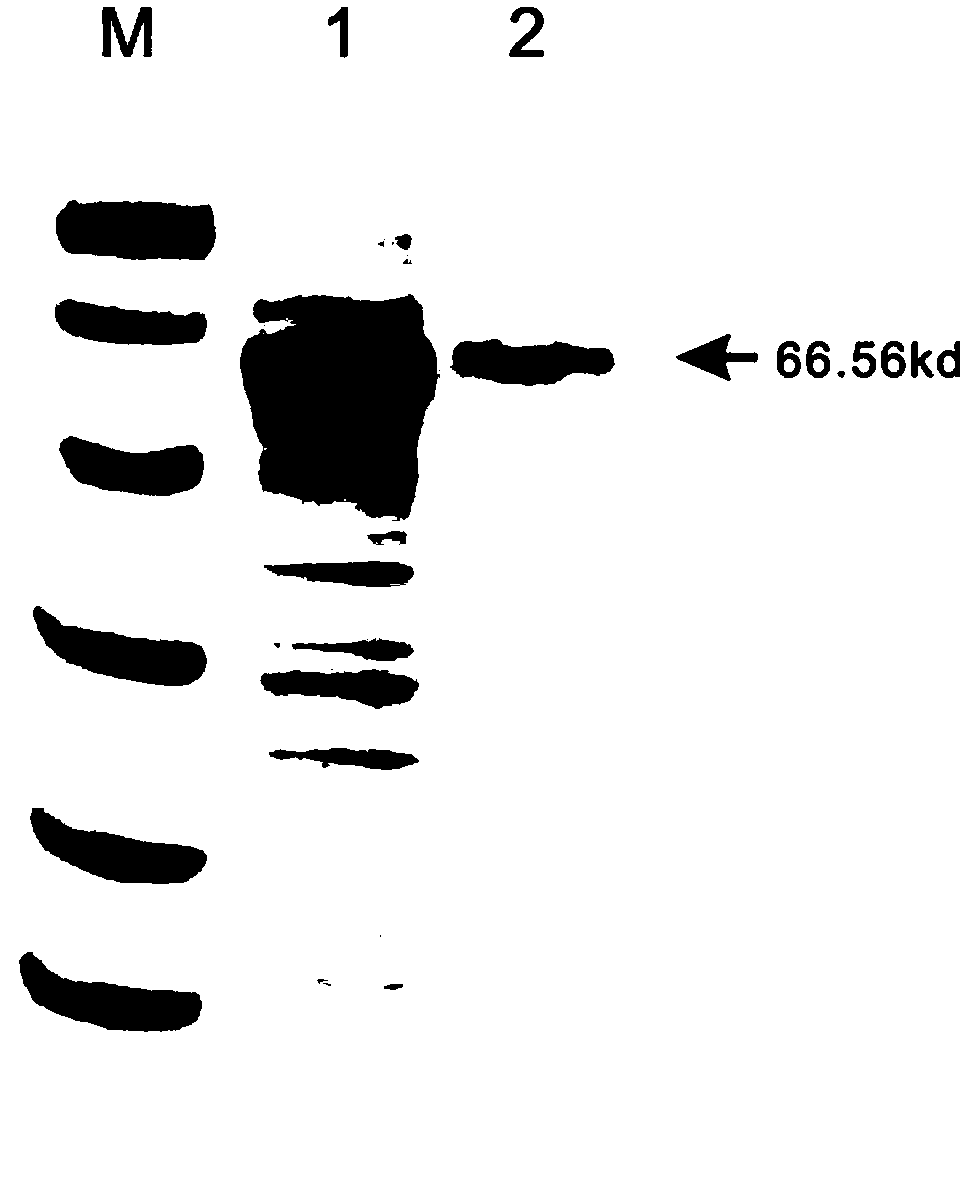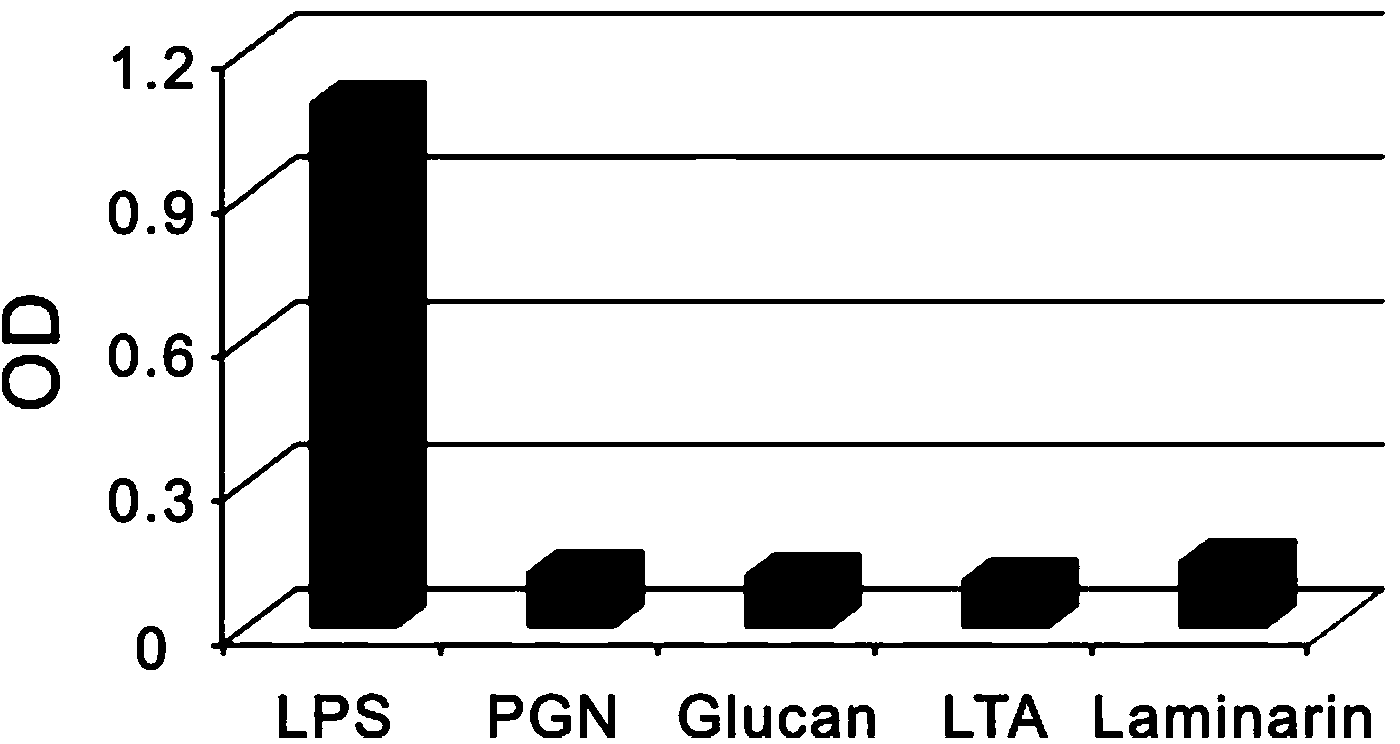Novel shellfish pattern recognition receptor LRPP (Leucine-rich Repeat Protein) specifically combined with LPS (Lipopolysaccharide)
A technology for pattern recognition of receptors and shellfish, applied in the direction of receptors/cell surface antigens/cell surface determinants, specific peptides, animal/human peptides, etc., can solve problems such as shortage of good breeds, death, disease outbreaks, etc.
- Summary
- Abstract
- Description
- Claims
- Application Information
AI Technical Summary
Problems solved by technology
Method used
Image
Examples
Embodiment 1
[0019] 1. RNA extraction
[0020] Total RNA was extracted using Trizol (Invitorgen), and the specific steps were as follows: (1) Take 50 mg of Pacific oyster tissue in a liquid nitrogen pre-cooled mortar, grind the tissue into powder, and transfer it to a centrifuge tube containing 1 ml of Trizol , pipetting, and mixing; (2) Add 200 μL of chloroform, shake vigorously for 40 seconds, and place at room temperature for 5 minutes; (3) Centrifuge at 12,000×g for 10 minutes at 4°C, transfer the supernatant to a new tube; (4) Add 0.5ml of isopropyl (5) Centrifuge at 12,000×g for 10 minutes at 4°C, and discard the supernatant; (6) Wash twice with 75% ethanol to precipitate; (7) Discard the supernatant, add 100 μL DEPC water to dissolve RNA.
[0021] 2. Construction of cDNA library and acquisition of full-length cDNA
[0022] 1) The SMART cDNA library construction Kit (Clontech) was used to construct the full-length cDNA library. The specific steps are as follows: (1) Use the RNA in ...
PUM
 Login to View More
Login to View More Abstract
Description
Claims
Application Information
 Login to View More
Login to View More - R&D
- Intellectual Property
- Life Sciences
- Materials
- Tech Scout
- Unparalleled Data Quality
- Higher Quality Content
- 60% Fewer Hallucinations
Browse by: Latest US Patents, China's latest patents, Technical Efficacy Thesaurus, Application Domain, Technology Topic, Popular Technical Reports.
© 2025 PatSnap. All rights reserved.Legal|Privacy policy|Modern Slavery Act Transparency Statement|Sitemap|About US| Contact US: help@patsnap.com



